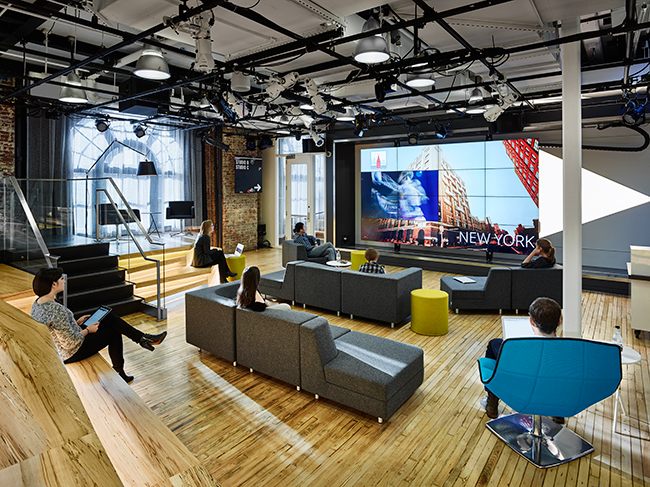 The YouTube space in New York was opened on November 6, 2014. It is the 4th of the 5 YouTube spaces located in cities world wide such as Los Angeles, London, Tokyo, and Sao Paolo. The space is in the Chelsea Market is 20,000 square feet and has multiple studios and set in which YouTubers can come and film things. There are 3 sound stages, 5 editing stations, 4 private editing suites, some permanent sets, lots of conference rooms, and some rotating sets. In fact, every room can be used as a film studio.
The YouTube space in New York was opened on November 6, 2014. It is the 4th of the 5 YouTube spaces located in cities world wide such as Los Angeles, London, Tokyo, and Sao Paolo. The space is in the Chelsea Market is 20,000 square feet and has multiple studios and set in which YouTubers can come and film things. There are 3 sound stages, 5 editing stations, 4 private editing suites, some permanent sets, lots of conference rooms, and some rotating sets. In fact, every room can be used as a film studio.
The space used to require a person to have over 5,000 subscribers on Youtube, it now requires 10,000 like the Los Angeles space does. Using the space means getting access to the sets, the post-production facilities and equipment. The space also gives workshops in using the various cameras, software and editing stations. If you have the subscribers, the use of the space is free. YouTube wants to help people grow into stars and they know that helping people create videos of higher quality will allow them to get more subscribers which will let them get advertisers and therefore money. If the YouTuber gets money, so does YouTube. The studios are best suited for helping emerging stars to make the jump from amateur to professional. The space is about letting the people do what they want, and simply giving them the tools to do it.
The space also doubles as a meeting ground for various advertisers, and people for YouTubers to potentially collaborate with. It is a professional environment that allows people to organically interact and discuss their work. The space want to be the place where people get together and make cool stuff.
During our tour of the New York YouTube Space, we saw lots of cool stuff but my favorite part was the reason we were there in the first place, the VR stuff. There was lots of stuff there. We saw some of the popular VR headsets like the Vive and the Oculus Rift and they were really cool. We even saw some things that weren’t exactly ready for the public like a phone called the Tango. It wasn’t a virtual reality phone, it was augmented reality, but it was still really cool. There was also a leap motion machine, an addon to the Oculus by a different company which allows the user to control things using their hands. And then, there was the PlayStation VR which, surprisingly, had some good games with it. I didn’t know that games could be that detailed in VR yet.
My favorite part was probably the Leap motion. Ever since on of the first posts I wrote on this site about how a creator is using leap motion with Oculus, I have wanted to try it. That particular post talked about how people said they were able to feel the objects they were holding in the game, even though it was simply a virtual representation of the object. I kind of experienced the same thing and so did some of my classmates. I think it’s going to become big in the next few years. It gives a whole new level of interaction, even on top of the interaction that VR already gave. The demo we had was one where you could create blocks and throw them at another AI player. It was a great way to learn the basic way the leap motion is used and the kind of immersion they give to an already immersive technology.